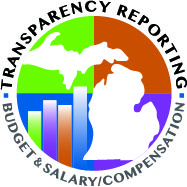Teacher Evaluation – Purpose and Procedures (June 2016)
Section 1249 of the Revised School Code requires that teachers be evaluated at least annually through a performance evaluation system that complies with statutory requirement. MCL 380.1249.
The Purposes of Evaluation
Performance evaluation is a formal communication tool for interaction between supervisors and employees that should lead to improved job performance, personal continuous growth, foster a change, and lead to improved student achievement. It should reward effective job performance and provide intervention where necessary. It should:
- Evaluate the teacher’s job performance at least annually while providing timely and constructive feedback.
- Establish clear approaches to measuring student growth and provide teachers with relevant data on student growth.
- Evaluate teacher’s performance, using multiple rating categories that take into account data on student growth as a significant facto For these purposes, student growth shall be measured by national, state, or local assessment and other objective criteria.
- Use the evaluations, at a minimum, to inform decisions regarding all of the following:
- The effectiveness of teachers and school administrators, ensuring that they are given ample opportunities for improvement.
- Promotion, retention, and development of teachers, including providing relevant coaching, instruction support, or professional development.
- Whether to grant tenure or full certification, or both, to teachers using rigorous standards and streamlined, transparent, and fair procedures.
- Removing ineffective tenured and untenured teachers after they have had ample opportunities to improve and ensuring that these decisions are made using rigorous standards and streamlined, transparent, and fair procedures.
- Promote and stimulate self-‐reflection and growth.
- Increase overall school improvement and student growth through improved teaching.
- Ensure that evaluation and goals are connected with school improvement, professional development, and personal goals.
- Establish and maintain a record of professional performance.
- Improve deficiencies in performance when identified.
- Be rigorous, transparent, and fair
- Provide timely and constructive feedback
Types of Student Data
Section 1249 requires the performance evaluation system to measure student growth by national, state, or local assessments and other objective criteria. . Student growth must be measured, at least in part, using the state assessments, and for grades and subjects in which state assessments are not required and administered for purposes of 20 USC 6311, student growth must be measured, at least in part, using alternative assessments that are rigorous and comparable across schools within the school district. Alternative assessments may include: pre/post assessments, NWEA, Aimsweb, Delta Math, PSI, PASI, Frye Words, DRA, MLPP, DIBELS NEXT, Common Assessments, PSAT, SAT, etc.. Special Education growth models may include IEP goals, Behavior Data, MI-‐Access, Brigance Inventory, Woodcock Johnson, and Achievement Tests.
Teachers will be evaluated on the rubric and on data goals. Percentages for student growth data will be based on current law and will count toward the teacher’s final Overall Score. The teacher’s goals and measures of what would constitute success will be developed by the District administrator/building principal in consultation with the teacher.
Evaluation Structure
- The District will develop timelines that all parties understand in advance of the evaluation process. All pre‐test data must be completed within the first 45 days of school.
- All teachers will be evaluated at least annually.
- The Administrator responsible for conducting the evaluation will be identified.
- Goals will be developed by the building/District administrator in consultation with the individual teacher. Three goals will be required: one from the Teacher Evaluation Rubric and two that include the use of data on individual student growth, building School Improvement Plans, and other needs assessments and/or team goals.
- Goals must be clearly defined and measurable.
- The evaluation of the teacher must include at least an assessment of the teacher’s progress in meeting the goals of the Individual Development Plan.
- Any special assignments will be noted on the teacher evaluation tool at the beginning of the evaluation process.
- Section 1249(2)(g) states: “The performance evaluation system may allow for exemption of student growth data for a particular pupil for a school year upon the recommendation of the school administrator conducting the annual year-‐end evaluation or his or her designee and approval of the school district superintendent or his or her designee.
Evaluation for Probationary Teachers
- Probationary teachers will be observed and evaluated during each of their first five years of employment (per the Teachers’ Tenure Act) unless they are highly effective for 3 consecutive years as a probationary teacher. In that case, they earn probation after 4 years. Also, if a teacher previously earned tenure in another Michigan school district, that teacher only needs to serve a 2‐year probationary period. In all circumstances, the teacher must have an IDP.
- The Evaluation steps will be as follows:
o The teacher and administrator will discuss areas of strength and areas for growth from the rubric. The teacher’s goals for the Individual Development Plan will be developed by the building/District administrator in consultation with the individual teacher. Three goals will be required: one from the Teacher Evaluation Rubric and two that include the use of data on individual student growth, building School Improvement Plans, and other needs assessments and/or team goals.
o The teacher shall be observed at least 2 times per year with at least 1 observation unscheduled. Within 30 days of the observation, the teacher will be provided with feedback from the administrator.
o The administration and teacher will meet and review goals and check progress using identified data at mid-‐year and end-‐year.
o At the end of the year, the administrator will write the Evaluation Summary and will share it with the teacher. Goals for the teacher will be suggested for the following year. Both the administrator and teacher will sign this report at this time.
o If the teacher disagrees with the Evaluation Summary, the teacher may write a rebuttal that will be attached to the evaluation.
Evaluation for Tenured Teachers
The Evaluation steps will be as follows:
- The teacher and administrator will discuss areas of strength and areas for growth from the rubric. The teacher’s goals for the Individual Development Plan will be developed by the building/District administrator in consultation with the individual teacher. Three goals will be required: one from the Teacher Evaluation Rubric and two that include the use of data on individual student growth, building School Improvement Plans, and other needs assessments and/or team goals.
- A tenured teacher will be evaluated at least annually. HOWEVER, if a teacher is rated as highly effective on 3 consecutive annual year-‐end evaluations, the school district may choose to conduct a year-‐end evaluation biennially instead of annually. If a teacher is not rated as highly effective on 1 of these biennial year-‐end evaluations, the teacher shall be provided with annual year-‐end evaluations.
- If a tenured teacher is rated highly effective or effective for 2 year-‐end evaluations, there only needs to be one observation.
- If a teacher is rated ineffective or minimally effective, the teacher will be put on an IDP, and there shall be at least 2 classroom observations with at least 1 observation unscheduled to assist in the performance evaluation.
- The administration and teacher will review goals and check progress using identified data at mid-‐year and end-‐year.
- At the end of the year, the administrator will write the Evaluation Summary and will share it with the teacher. Goals for the teacher will be suggested for the following year. Both the administrator and teacher will sign this report at this time.
- If the teacher disagrees with the Evaluation Summary, the teacher may write a rebuttal that will be attached to the evaluation.
Evaluation for Teachers Not Meeting Goals
- If a teacher has not met stated goals and demonstrated student growth or has specific performance problems, as identified in writing by the supervisor via the evaluation process, the teacher may move to an Individual Development Plan (IDP). The IDP shall be developed by appropriate administrative personnel in consultation with the individual teacher.
- If a teacher has any one domain that is overall minimally effective or ineffective, the administrator may mark the overall evaluation as minimally effective or ineffective.







 Visit our School of Choice
Visit our School of Choice